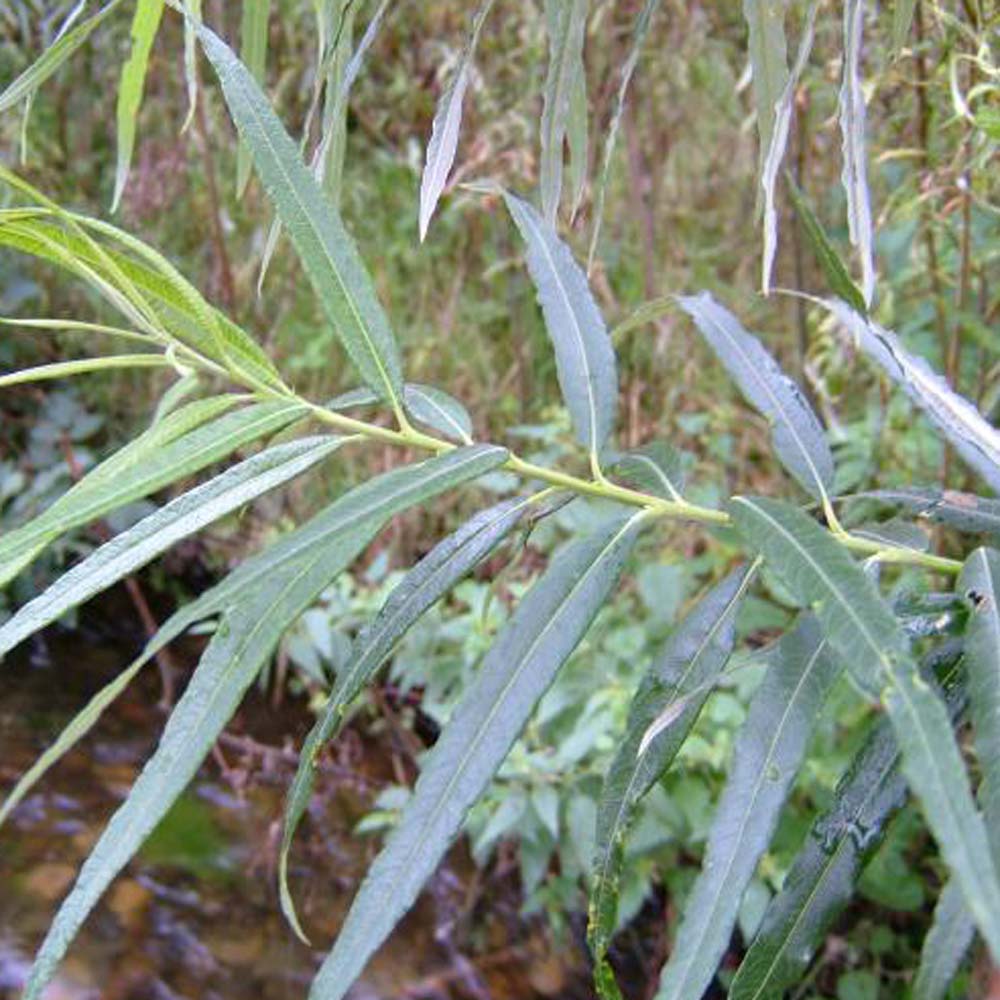
Osier Willow
Salix viminalis
Basic Information
🌿 Family: Salicaceae🗺️ Zone: 4-9
Other Names:
- Basket Willow
- Common Osier
🌡️ Ideal Temperature : 40°F – 85°F
🔥 Heat Tolerance: Up to 100°F
❄️ Cold Tolerance: Down to -30°F
🌱 Type: Perennial
Layers
- Shrub
- Small Tree
Functions
- Wildlife Attractor
- Erosion Control
- Windbreaker
- Border Plant
- Dynamic Accumulator
- Mulcher
- Animal Fodder
- Water Purifier
Pests
No pests associated with this plant.
Description
Osier Willow (Salix viminalis) is a fast-growing, deciduous shrub or small tree known for its long, flexible branches that make it ideal for basket weaving and coppicing. It thrives in moist soils and is often found along riverbanks and wetlands. The tree provides valuable wildlife habitat, erosion control, and windbreak functions in a permaculture system.
🌞💧 Sun and Water Requirements:
- Prefers full sun but tolerates partial shade.
- Thrives in moist, well-drained soil but tolerates waterlogged conditions.
- Requires moderate to high watering, especially in dry climates.
✂️🫘 Methods to Propagate:
- Cuttings: Root easily from hardwood cuttings in late winter or early spring.
- Seeds: Can be grown from seed but is less common due to the ease of propagation from cuttings.
- Coppicing: Can be cut back regularly to encourage new growth.
🧑🌾👩🌾 When to Harvest:
- Branches for weaving should be harvested in winter when dormant.
- Coppiced wood can be cut back every 1-2 years for optimal growth.
Purpose
Osier Willow serves several permaculture functions:
- Wildlife Attractor: Provides food and shelter for birds, insects, and small mammals.
- Erosion Control: Strong root system stabilizes soil, preventing erosion.
- Windbreaker: Acts as a wind barrier when planted in rows.
- Border Plant: Used for hedgerows and property delineation.
- Dynamic Accumulator: Draws up nutrients from deeper soil layers.
- Mulcher: Coppiced material can be chopped and used as mulch.
- Animal Fodder: Young leaves and shoots are edible for livestock.
- Water Purifier: Absorbs excess nutrients and heavy metals from water.